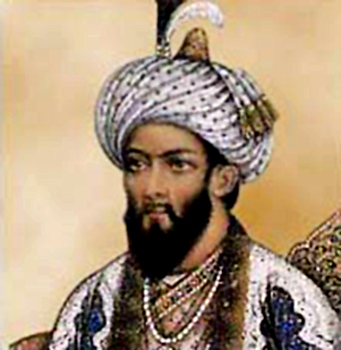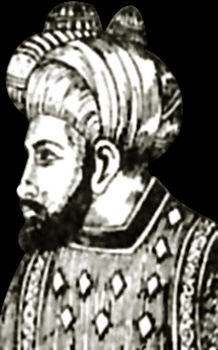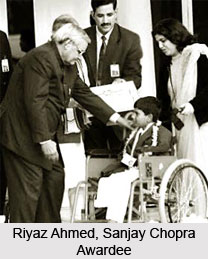 Indian Army under Delhi Sultanate was heavily influenced by the foreign invasions. The Muslim rulers have made considerable contribution to the system of military administration in the country. With their military form of government they did not find much difficulty in perfecting the system already in force and introducing their own reforms as and when necessary. A large standing army was maintained by the State. Though the loyalties of the provincial governors were mostly open to doubt, their forces were always promptly available when the necessity arose for the Central Government. The royal body guards were specially selected troops for the immediate defence of the capital and served as palace guards.
Indian Army under Delhi Sultanate was heavily influenced by the foreign invasions. The Muslim rulers have made considerable contribution to the system of military administration in the country. With their military form of government they did not find much difficulty in perfecting the system already in force and introducing their own reforms as and when necessary. A large standing army was maintained by the State. Though the loyalties of the provincial governors were mostly open to doubt, their forces were always promptly available when the necessity arose for the Central Government. The royal body guards were specially selected troops for the immediate defence of the capital and served as palace guards.
Garrisons were also placed at provincial capitals. The Sultan was the virtual Commander-in-Chief of the entire forces of the empire. The War Ministry administered the Army Department. The minister in-charge was called the arid-i-mamlik. Indian Army under Delhi Sultanate was composed of infantry, cavalry, and elephants. The infantry was still of secondary importance and was equipped with bows and arrows, swords and daggers. Cavalry continued to be the pre-eminent service due to its mobility, manoeuvrability and hard-hitting power. Artillery was yet in its infancy and stones and fire balls still continued to be thrown by the catapults. It was Babur who for the first time made a proper use of artillery in battle and won his much deserved victory. The elephants continued to hold their important position in battle while at the same time bringing reverses for their own side. There were no Hindu or Rajput officers in the army of that period.
Ghiyas-ud-din Balban was the first among the Sultans to take up the re-organisation of the army with great earnestness. Though there was no revolutionary change he for the first time exercised great strictness and vigilance. In the context of the times when the theocracy derived its strength from the armed forces Balban realised that a strong and efficient army was the pre-requisite of a stable government. During his apprenticeship and campaigns that he successfully undertook he had realised the importance of well-fortified frontiers. He, therefore, strongly stationed these out-posts with Turkish troops; repaired old forts and built new ones at strategic points. With the help of these he succeeded in repelling the inroads of the Mongols also.
 The country was divided into military commands. The head of these commands were responsible for maintaining law and order in their own areas, besides the provision of contingents to the Sultan in times of emergency. Maintenance of Imperial Service troops much later, by the various Indian States for the use of the British Paramount Power in India was very much on similar lines. The muqlis or the head of the commands received a high salary which was adjusted against the revenues of his command. Some of the important military commands in north India were Samana, Lahore, Sir-hind, Bhatinda, Hansi, Nagaur, Sunam, Gwalior, Bayana, Mandawar, Amroha, Koil (Aligarh), Bulandshahr, Kara, Manikpur and Sambhal. The divisions did not form a set pattern and the areas of influence of the muqlis depended upon the personality and strength of each commander. These military commands can well be compared to some of the military divisions of the country introduced by the British forces in India and in force even to the present day. Now they are known as the Commands, Areas, Sub-areas and Stations.
The country was divided into military commands. The head of these commands were responsible for maintaining law and order in their own areas, besides the provision of contingents to the Sultan in times of emergency. Maintenance of Imperial Service troops much later, by the various Indian States for the use of the British Paramount Power in India was very much on similar lines. The muqlis or the head of the commands received a high salary which was adjusted against the revenues of his command. Some of the important military commands in north India were Samana, Lahore, Sir-hind, Bhatinda, Hansi, Nagaur, Sunam, Gwalior, Bayana, Mandawar, Amroha, Koil (Aligarh), Bulandshahr, Kara, Manikpur and Sambhal. The divisions did not form a set pattern and the areas of influence of the muqlis depended upon the personality and strength of each commander. These military commands can well be compared to some of the military divisions of the country introduced by the British forces in India and in force even to the present day. Now they are known as the Commands, Areas, Sub-areas and Stations.
Under the Delhi Sultanate, the King was in supreme command of the armed forces. Though a civilian, the Chief Minister or wazir was required to command army contingents on certain occasions. The army was placed under the Army Minister or diwan-i-ariz. Besides, being the adviser to the King on all army matters he was also the Pay Master General. The army was, however, independent, of the control of the Finance Department. The ariz held regular reviews to ensure that it was well equipped and trained. He was also responsible for all recruitment. Proper muster-rolls of personnel were maintained. Other important officers were amiri dkhur (Master of Horse) and shanahi-pilan (Superintendent of Elephants). The cavalry and infantry which continued to form the important branches of the army were placed under the command of experienced and faithful maliks. Officers and men for the cavalry were enrolled mostly from the important slave tribes like the Muizzi, Qutbi and Shamshi. The cavaliers were mostly volunteers who brought their own horses and weapons. They were paid liberal allowances and higher rates of pay. On special occasions some troops were locally raised for jihad. The soldiers were given four-fifth of the booty or khams captured in war while the remainder went to the State.
Ghiyas-ud-din Balban was also the first to break the backbone of another age old custom. The grant of lands in consideration of military service had now become an established practice. With the passage of time it had become very much open to abuse and in consequence lost much of its value to the State. The veteran followers of Sultan Shamshuddin had enjoyed very liberal grants of land in the Doab area for more than thirty years and were a great drain on the State. Balban ordered an enquiry into these land holdings and it was brought out that many of these persons or their heirs did not render any service to the State. He confiscated all the lands of old people and widows and those who did not serve the State. They were all granted cash pensions. Those who offered their services to the State were allowed to retain their holdings. Their revenues were, however, collected by the State and they were paid in cash. In the face of general discontent among the military oligarchy of which he himself was a distinguished member, these orders were later cancelled. He had, however, succeeded in achieving his aim in breaking the old custom and the power of the khans and maliks. Military service now again came to be sought for and became popular.
Ghiyas-ud-din Balban also organised a very effective espionage system to secure his authority in the far off provinces. All spies were appointed by him and were controlled by the barid-mamlik or Chief News Writer. These were independent of the governors and commanders in the field. News was disseminated to the Sultan every day from all corners of the Empire. Ala-ud-din Khilji, who followed Balban, has been regarded as one of the greatest Sultans of Delhi for his military achievements. For the first time, he succeeded in penetrating far into the south of the sub-continent and brought it under his control. He also introduced new army reforms.






